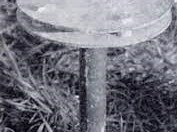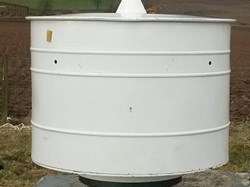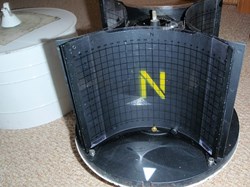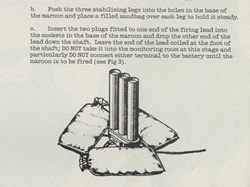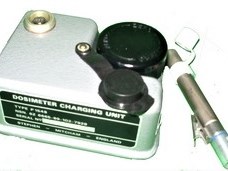ROC Post Equipment
Post Equipment
The Fixed Survey Meter or FSM was used to measure radiation levels outside from the safety of the post following a nuclear attack. The indicator unit was connected to an ionisation chamber fixed to a telescopic rod, which was pushed through through a pipe connected to the surface. At the surface, the ionisation chamber had a PVC cover to protect it from the elements. Following an attack, radiation readings would be reported to Group Control by telephone or radio at regular intervals. Scientists could then plot the spread of radiation, and issue instructions to posts to warn the public
The Bomb Power Indicator or BPI measured the peak pressure following a nuclear explosion, as the blast wave moved over the post. The instrument was connected by a pipe to baffle plates at the surface which diverted the air flow down to pipe to the dial. The pointer would stick on the dial at the maximum pressure. The resulting reading would be reported to Control using the code word “Tocsin” followed by the post designation.
The Ground Zero Indicator or GZI was a simple method of determining the position (the Ground Zero) and height above ground, of a nuclear burst. The instrument was based on the principle of a pinehole camera. It consisted of a cylindrical metal cover which was removed to show four concave faces. Each face held a sheet of photographic paper in a cassette, which consisted of a plastic sleeve marked with a lined grid in 5 degree increments. Each face was aligned with a small hole in the casing (see photograph of GZI cover). The instrument was positioned so that each pinhole was aligned with a point on the compass: N, S, E and W. Following a nuclear burst the light from the explosion would burn a spot on the photographic paper, and from the markings on the cassette grid the location of the burst could be calculated and reported to Centre. If the burst was above the horizon line it would be reported as an air burst.
In operational conditions the photographic paper would have to be regularly changed by a post member, as the ambient light would gradually darken the paper. In a war situation papers would be changed one minute after the BPI had detected a nuclear burst.
To change papers it would be necessary for a post member to don protective clothing, climb the ladder, remove the GZI cover and remove the exposed paper, which would be placed in a light-proof satchel. Replacement papers would then inserted.
Inside the post, the exposed papers would be examined to find the spot caused by the bomb burst, and would record the bearing and elevation from the cassette grid in the post log. The information would then be passed to Control where the exact geographical location of the burst could be determined.
The warning WB400 Receiver Carrier Unit was introduced from 1963 onwards. The battery-powered unit allowed spoken warnings and messages to be communicated to posts so that warnings could be given to the public.
A hand operated Siren would be used to warn the public of an impending attack, and a three-burst electrically-fired Maroon would be used to warn the public of approaching fallout.
An Individual Dosimeter would be issued to each post member. This was a small Fountain-pen sized instrument which would record radiation absorbed by the holder when they were required to operate outside the post to fire maroons or change GZI papers.


